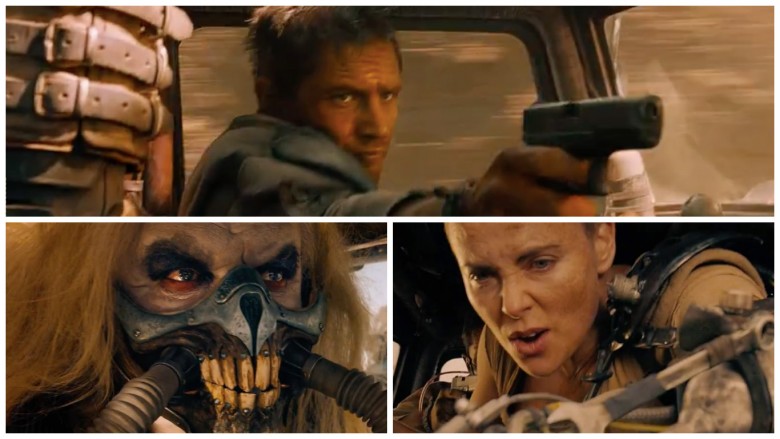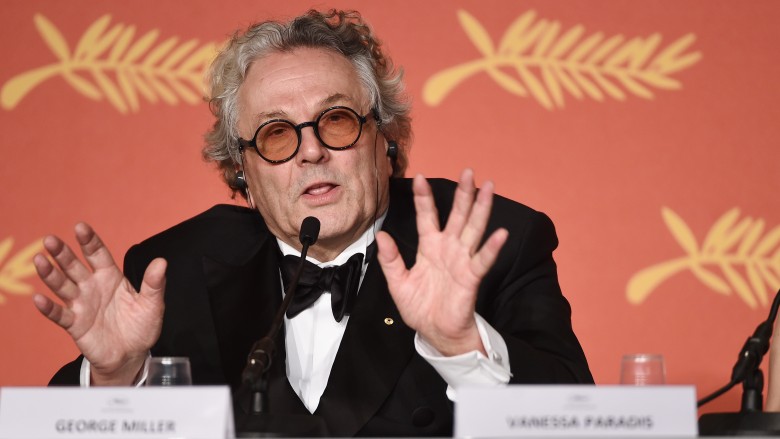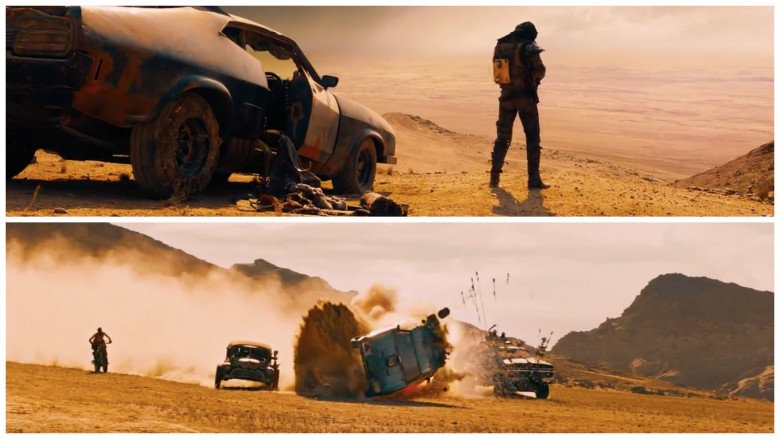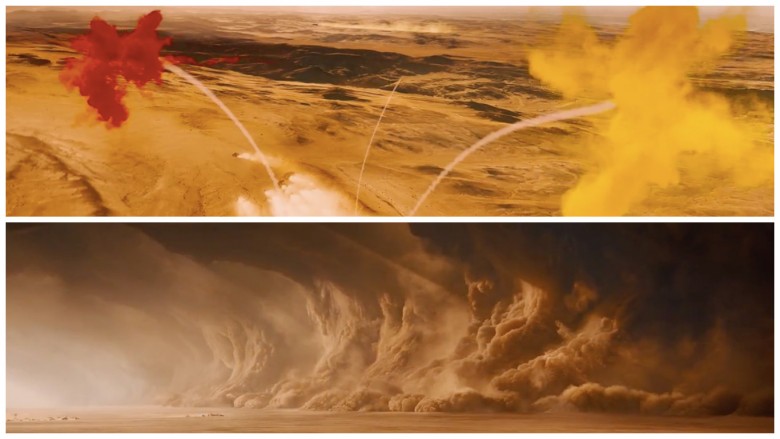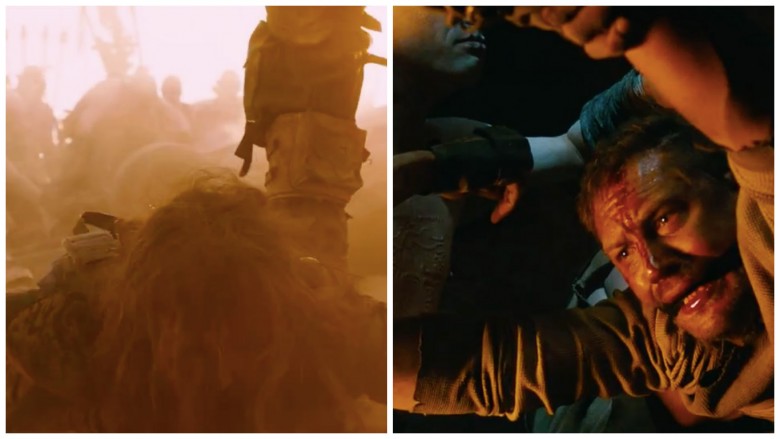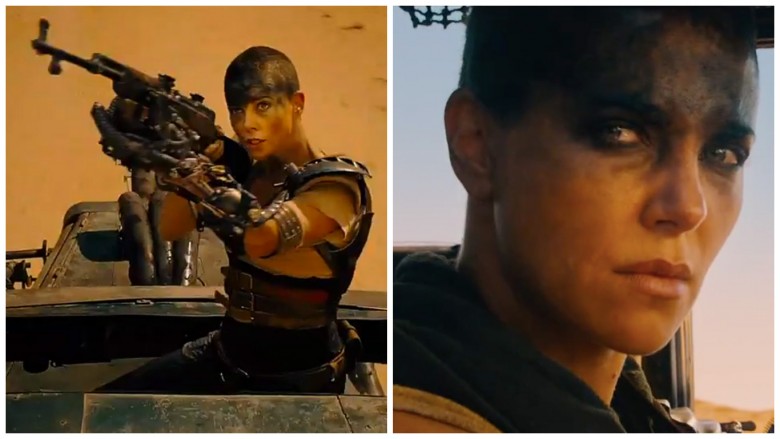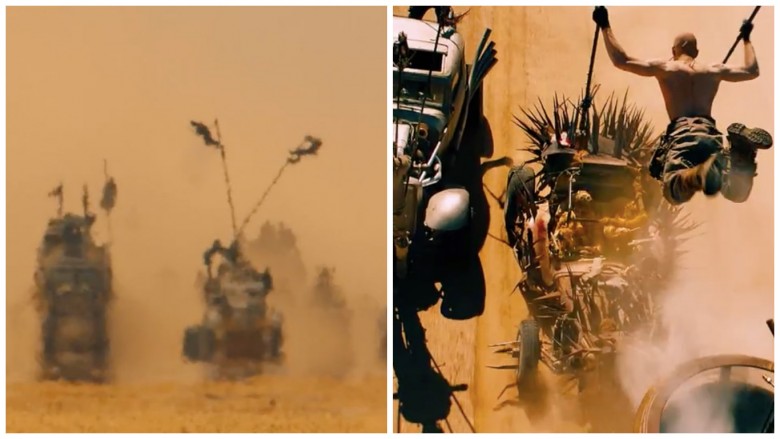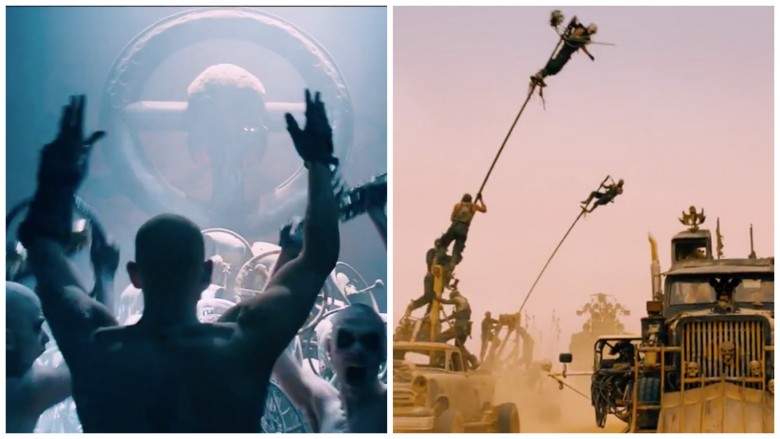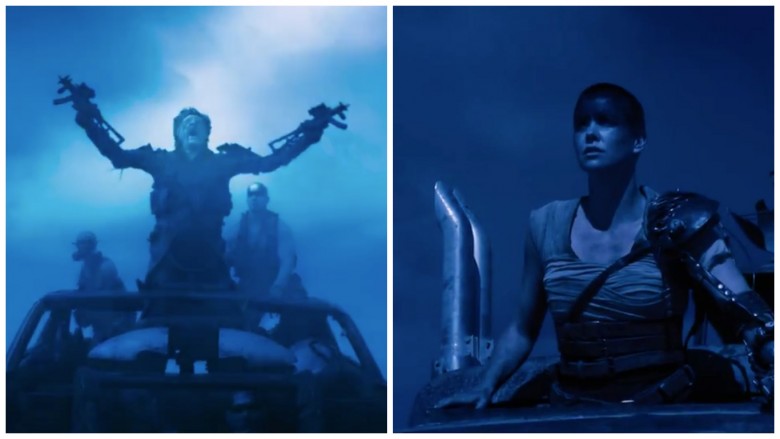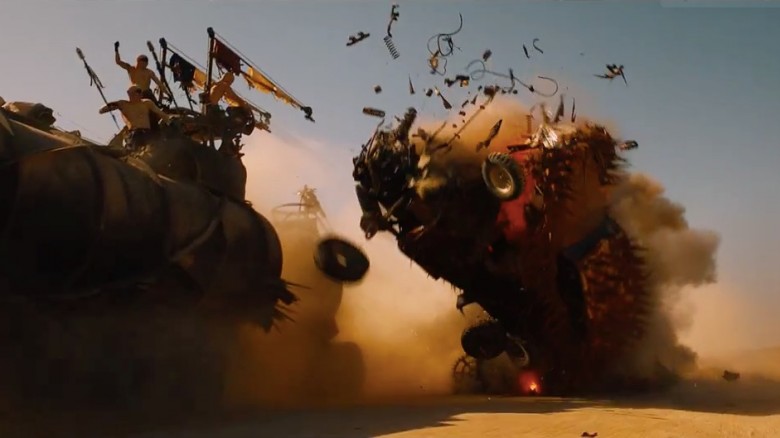Why Mad Max 5 Will Be Better Than You Think
If you haven't seen Mad Max: Fury Road, watch it and hurry back. (Spoilers ahead!) If you have seen Fury Road, then you know why we're so excited about the news that there are two possible new Mad Max movies on the way. Here's why Mad Max: The Wasteland and Mad Max: Furiosa will be even better than you think.
Mad Max: Fury Road showed the world that George Miller is better than ever
Director George Miller dedicates himself to his movies. He famously offered up his own car to be wrecked in the original Mad Max—and wreck it they did. As Tom Hardy told Collider in 2017, "There's mythology to do with Mad Max that spans copious amounts of tales. What's wonderful about George [Miller] is that he's created sagas for Max and sagas for Furiosa." And studios allow him to take his time as he builds Mad Max's eccentric Wasteland of a world.
With Mad Max: Fury Road, Miller told a moving, complex, character-driven story with practical effects-driven action sequences, explosions, visual trickery, and punchy dialogue. What's even more impressive is how, with Fury Road, Miller used the action genre to tell a story about how a collapsing patriarchal society treats women. (Short answer: like sex slaves, milk-producing cattle, and baby factories.)
If anybody can tell the morally complex stories of the Imperator Furiosa and Max Rockantansky in a dignified manner, it's George Miller, director of Happy Feet and the unjustly maligned Babe: Pig In the City.
George Miller will have complete creative control
Readers might be surprised by how many movies were basically predetermined by a studio exec and not the writer or director. (Lookin' at you, Alien 3!) Luckily, with his many accolades and a proven track record, George "the reason you know Mel Gibson's name" Miller will finally get the sort of creative freedom he had as an indie filmmaker in the 1980s—the few differences being the budget, the production values, the project's scope, and the star power involved. (Now, imagine if Miller had enjoyed this level of control back when getting Heath Ledger to play Max was still a possibility...)
The script isn't a cash grab; it's been evolving since before Fury Road's production
Fury Road's production hit snag after snag, and yet it turned out to be a masterpiece—maybe even better than it would've been if Miller had been able to get it off the ground when he originally planned to. First envisioned as a Mel Gibson movie slated to begin filming in Australia in 2001, Fury Road lost its funding as a consequence of the Australian dollar's post-9/11 collapse. Miller tried again in Australia but was foiled by weather problems. By the time Charlize Theron, Tom Hardy, and the War Boys found themselves in South Africa filming the version we know and love, the filmmakers had a fully realized world with its own values, beliefs, colloquialisms and style. Miller and screenwriters Nico Lathouris and Brendan McCarthy "had dug down deep into the backstory, not only of the characters, but of every vehicle. How the steering wheels became religious artifacts and things like that," said Miller in an interview with Top Gear.
So, if there's news of delays and more delays, remember that a long production process has never detracted from the quality of a Mad Max project.
More Wasteland
The Wasteland remains largely unexplored in Fury Road. We see a dusty expanse. We see the crow-covered Bog where the Green Place of Many Mothers used to be. We see the Rock Riders' territory and a glimpse of the Plains of Silence (which are "nothing but salt," anyway). There are buried cities and presumably massive encampments like Bartertown from Thunderdome, but we don't see them. We never see Gastown or the Bullet Farm up close. We see very little of the inner workings of the Citadel.
All of which is to say that with two more Mad Max movies on the way, we're bound to see more of the iconic Wasteland. As Miller has shown with each entry in the series, the more funding he has, the more elaborate the vision. If the upcoming movies follow the storylines of the comics, we can expect to see a lot of the buried cities, as well as more of the Citadel. We're hopeful for a cinematic interpretation of the War Rig comic, which begins on Day 43 after the Fall, mere weeks after the power fails. It would give movie audiences a glimpse of how the world was killed.
More of Tom Hardy's brutish yet principled, not all that mad Max
Despite its massive world and varied locales, the tragically Tom Hardy-less Mad Max video game is universally considered a just-above-mediocre manifestation of the franchise. Why? You could point to the open-world design, the lack of Tom Hardy, the overabundance of pre-existing Mad Max "inspired" game series, the decision to kill off its only interesting character (link contains game spoilers), or the over-reliance on "heroic" tropes in its narrative—and you'd be right, to some extent. But we think its biggest shortcoming is how its mopey, Batmannish Max—"my family's dead so now I trick out my car and make a name for myself fighting bad guys"—directly contradicts Tom Hardy's muttering, pragmatic, likable take on the character.
Its "War Boyish" fascination with violence notwithstanding, Fury Road is about the women around Max—and that's the Max we want to see more of. That's not to say the captivating swagger of Gibson's Max makes him irrelevant, but it puts him at odds with the story Fury Road sought to tell, which was more about Furiosa and her quest to rescue the Wives and find redemption.
Ben Affleck's Bruce Wayne could learn a lot from Tom Hardy's Max. In Fury Road, he allows the story to be about someone other than himself and something other than his own sorrow. Fury Road's narrative works in part because Hardy's brutish yet principled Max isn't a self-absorbed protagonist. He's arguably neither the movie's hero nor its anti-hero. Furiosa is the character who changes, who matters. She's the star of the show—and another movie with her in the driver's seat will be awesome. (Furiosa is technically Mad Max 6. We're confident it'll be just as good, if not better, than Mad Max: The Wasteland.)
More cinematic Furiosa
Charlize Theron's Imperator Furiosa rocks. We love literally everything about her—the stone-cold stare, the hair, the prosthetic limb, the expert marksmanship, her hope to return to the Green Place, her mysterious quest for "redemption," the way she protects the Wives, the way she strikes fear in the hearts of War Boy and Immortan Joe alike, the respect she commands. According to George Miller, "Charlize, actually, was the only actor I thought about for this role. She's somebody who's got a lot of stature physically and in her spirit, and she's pretty uncompromising. She shaved her hair, she said Furiosa would not worry about hair in the heat and the dust."
We're psyched about the forthcoming Furiosa movie. We want to see more of her life among the Vuvalini and how she came to work for Immortan Joe among his War Boys. According to the introduction to the Furiosa comic, the comics' plotlines were provided to the actors during the filming of Fury Road, to inform their onscreen performances. Therefore, the Furiosa we see kicking ass onscreen is Theron's take on that same twisted tale. Let's hope the Furiosa flick learns from the comic's mixed reception and allows Theron's distinct interpretation of the character shine through.
We do have some concerns. In the eyes of some critics, the comic's rape-revenge origin story gave the unique character some controversial, out-of-character lines (link contains page-by-page spoilers). If the Furiosa film adapts the comic verbatim, some fans might be turned off. For instance, Furiosa reveals a perhaps unexpected conservative streak—telling the Wives how "lucky" they are to be coddled sex slaves and chastising one of them for an attempted abortion, equating it to killing. Details like these might not jibe well with audiences who consider her a feminist heroine through and through. (That said, both of these examples can be explained in terms of simple cutthroat survivalism, too. Everything doesn't have to be political.)
The Furiosa comic's controversial plot points could present a challenge, for sure.
Academy Award-winning Fury Road cinematographer wants to direct Furiosa
If rumors prove true, though, George Miller won't direct Furiosa. That honor is likely to go to John Seale, but don't get discouraged, diehard Miller fans. Seale isn't some Hollywood shill; he did the cinematography for Fury Road. If you can't get George Miller to direct both sequels, then putting Seale in the director's chair for one of them is the next best thing.
The cinematography in Fury Road isn't just aesthetically beautiful, shiny, and chrome; it serves and enhances the story. The movie's great moments stay with you: "What a day! What a lovely day!" "Then who killed the world?" "You wanna get through this? Do as I say." "She went under the wheels." "Witness me!" Each of these lines conjures a distinct image (or several), thanks to John Seale's Oscar-winning cinematography. We look forward to an equally memorable Furiosa.
We wonder about the color palette of Furiosa. Apparently, the bold, over-saturated colors of Fury Road weren't part of the initial cut; for Miller, the best cut is the Black and Chrome Edition, which uses a burnt-out high-contrast black-and-white palette. Which style will Seale choose when he's in the director's chair for Furiosa?
Miller's 'if you see it, it's there' take on allegorical storytelling
In an interview with Starburst, Miller quoted Freddie Mercury to help explain the role of subjectivity in allegorical storytelling. According to Miller, Mercury responded to a question about "Bohemian Rhapsody's" meaning by saying, "If you see it in there, dear, it's there." Miller elaborated, "The hope is that people will make their own connections and that the film will have some [subjective] meaning for them."
In a 2016 interview with NPR, Miller described taking the long view when assessing successes and failures. It's a simple attitude that's all too rare among big-time filmmakers: once the movie comes out, it belongs to the audience. Miller put it like this: "After a while the audience starts to tell you what your film is... It will be a few years before I or anyone else will have any idea as to whether [Mad Max: Fury Road] really stuck." Hasn't it stuck? Hasn't it been a few years? Are we not still totally obsessed?
As the Fury Road comics prove, there's a ton of untold stories in the Wasteland
The Fury Road comics get a bad rap for their characterization of the Imperator Furiosa. Meanwhile, the backstories of Nux and the Immortan Joe and the two issues that follow Max's sad existence in the lead-up to the movie's story are well worth reading.
In the movie Mad Max: Fury Road, we see just a few frames of a woman and a young child—Glory the Child in the comics—being mowed down by a truck. They exist in Max's memory, haunting him, crying out to him: "You let us die!" In Max's two-part story in the comic, we learn a little more of their stories, but there are many unanswered questions—and enough potentially adaptable content for more than two movies.
'Tangentially linked' sequels with a focus on world-building
Massive shared worlds are all the rage. The big trick of a successful franchise is a bunch of protagonists sharing one world, so each film's plotline informs the action of the others.
Once a sequel gets greenlighted, the previous movies transform into a feature-length commercial for the upcoming flick. Look no further than the Marvel Cinematic Universe for proof positive of this phenomenon of movie-as-hype-vehicle for the franchise. Does Iron Man not generate interest in Iron Man 2? Does Captain America: Civil War not make you curious about Avengers: Infinity War?
With two different sequels on the way, the Wasteland of Max Rockatansky and the Imperator Furiosa has a chance to expand exponentially. The Mad Max franchise has two shots at replicating—or exceeding—its prior successes. We think they'll do it in one.

